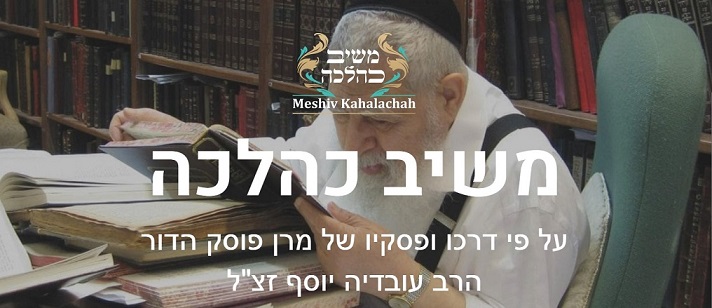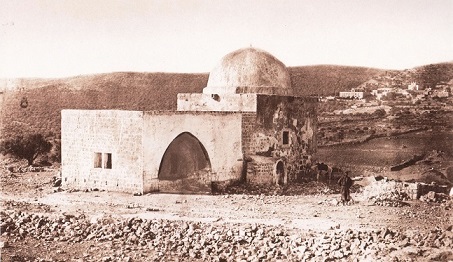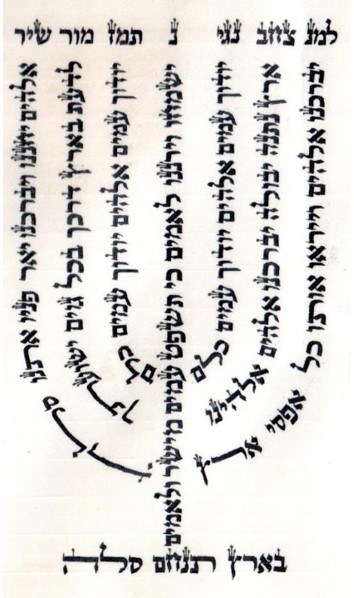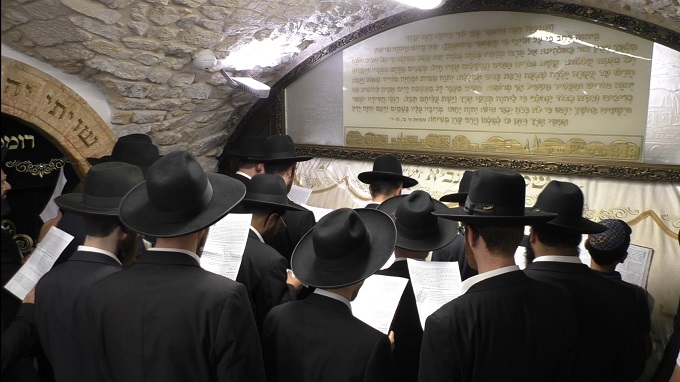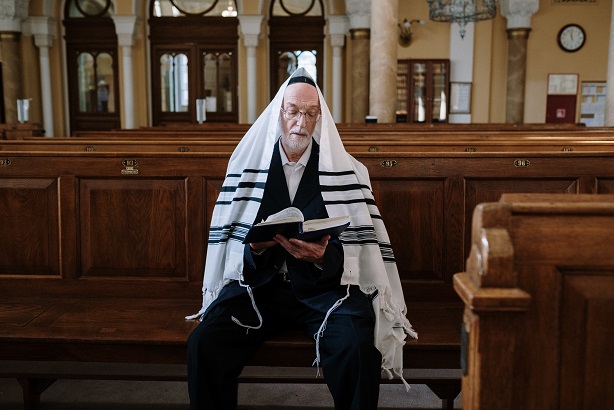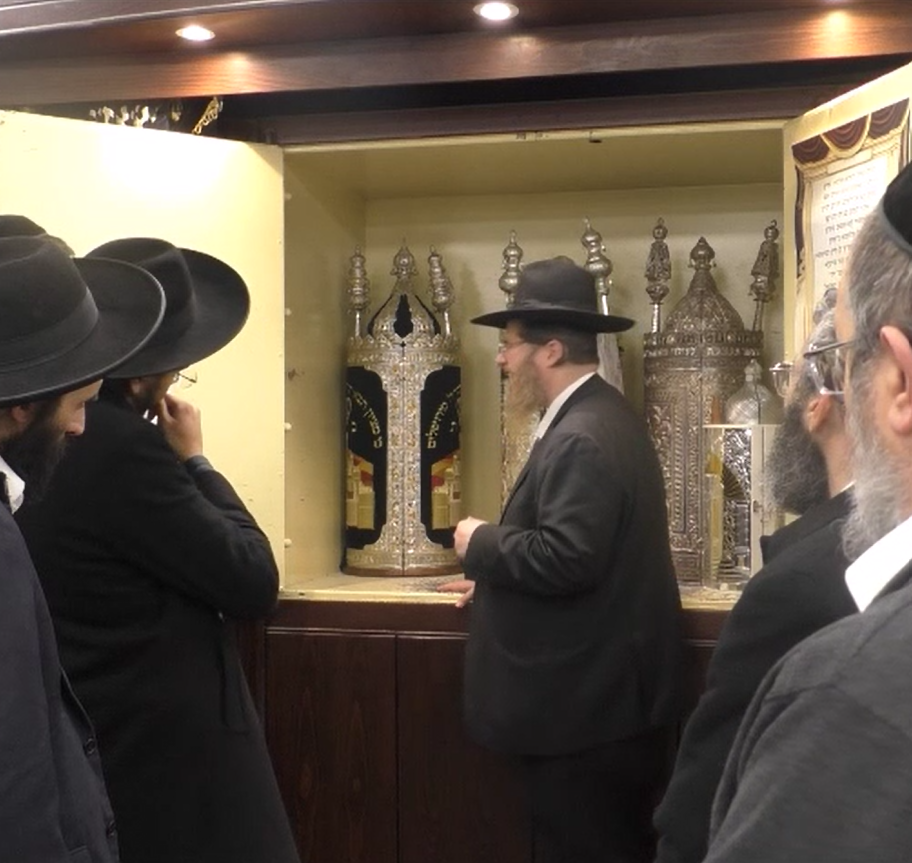כתוב בפסוק בפרשת משפטים
וְהִגִּישׁ֤וֹ אֲדֹנָיו֙ אֶל־הָ֣אֱלֹהִ֔ים וְהִגִּישׁוֹ֙ אֶל־הַדֶּ֔לֶת א֖וֹ אֶל־הַמְּזוּזָ֑ה וְרָצַ֨ע אֲדֹנָ֤יו אֶת־אׇזְנוֹ֙ בַּמַּרְצֵ֔עַ וַעֲבָד֖וֹ לְעֹלָֽם׃
The literal reading of the text would imply that one has the option of boring the hole either on the door or on the doorpost, yet Chazal (Kiddushin 22b) clarify that the doorpost is in fact an invalid place to bore the hole, as the Torah itself states (Re’eh, Devarim, 17;15)
וְלָקַחְתָּ֣ אֶת־הַמַּרְצֵ֗עַ וְנָתַתָּ֤ה בְאׇזְנוֹ֙ וּבַדֶּ֔לֶת וְהָיָ֥ה לְךָ֖ עֶ֣בֶד עוֹלָ֑ם וְאַ֥ף לַאֲמָתְךָ֖ תַּעֲשֶׂה־כֵּֽן׃
We must specifically bore the hole on the door alone, the reason that the Torah mentions the doorpost in the verse prior is to teach us that the characteristics of the door must be similar to that of the doorpost, just as the doorpost is perpendicular so too the door must be perpendicular and on its hinges when performing the piercing.
In Aderes Elyahu, the Vilna Gaon comments on that verse:
פשטא דקרא גם המזוזה כשרה אבל הלכה עוקרת את המקרא וכן ברובה של פרשה זו וכן בכמה פרשיות שבתורה והן מגדולת תורתינו שבע”פ שהיא הל”מ והיא מתהפכת כחומר חותם חוץ המצות שבאו במנצפ”ך שהם מישרים
The simple reading of the verse implies that one can bore a hole in the ear of the Jewish slave on the doorpost, yet the oral law uproots the textual reading of the verse, This is true for most of this parshah as well as many other parshiyos in the Torah. This is due to the greatness of the Oral Torah which was transmitted by Moshe from Sinai, as it reverses like the mold of a stamp, except for the commandments that come from Mantzepach which are straight.
The Gaon is teaching us that the oral Torah and the written Torah are one and the same, the only difference is perspective. The wonderful analogy he uses to describe this phenomenon is the mold of a stamp in respect to its imprint on paper. The mold of the stamp has the lettering backward and is only spelled properly when stamped on paper, so too the written Torah is to us like the mold of the stamp whereas the oral Torah is its imprint. A tremendous parable that enlightens the mind to the relationship of the oral Torah and the written Torah.
There Vilna Gaon writes that there is an exception, however, as the mitzvos from Mantzepach are straightforward. We know that Mantzepach is an anachronym for the end letters in the Hebrew alphabet as seen from the Gemara (Megillah, 2b-3a). But what exactly are the mitzvos that are learned from Mantzepach? Furthermore, in what way are these mitzvos straightforward as opposed to the other mitzvos?
Answer:
Your question is beautiful question, and the words of the goen Mivilna are clear things that open our eyes to seeing the words of the Holy Torah.
As for your question, I will precede first of all that we do not have such a grip on these hidden and transcendent things of the words of the genius of Vilna so that I cannot answer exactly what he means by the matter, because they are things in the hiddenness of the Torah.
I will note that goen Mivilna wrote is already written in the new zohar (שיר השירים Page 12) he wrote to the well the verse “Mishraim Love”,
“, בזה הלשון מישרים אהבוך, “מישרים אינון שאר אתוון דאשתארו ומאן אינון מנצפ”ך”, וביאר בפירוש הסולם שם ‘שמישרים’ הכונה לאותיות שנשארות מהכ”ב אותיות שבתורה והן אותיות מנצפ”ך.
I will also note that in the book of Zichron Eliyahu (page 11) he wrote to explain the words of the go’en from Vilna: and it seems to the well of the matter that the letters were learned five halakhot that disappeared from Moses, from what he received from Sinai and marked it with letters from The Manspach
וז”ל ונראה לבאר הענין שמאלו האותיות נלמדו חמש הלכות שנעלם ממשה רבנו, ממה שקבל מסיני תרי”ג מצות וסימן לזה אותיות מנצפ”ך היינו מ’ בהלכות שבת, מקושש (במדבר ט”ו ל”ד) כי לא פורש מה יעשה לו. נ’ בהל’ מגדף נוקב שם ד’ (ויקרא כ”ד י”ב) וינחהו במשמר לפרוש עפ”י. צ’ בהל’ ירושה צלפחד במדבר (כ”ז ה’) ויקרב משה משפטן לפני ד’. פ’ בהל’ טומאה פסח שני (במדבר ט’ ח’) עמדו ואשמעה מה יצוה לכם. כ’ בהל’ עריות כזבי בת צור (במדבר כ”ו ו’) ויקרב אל אחיו והמה בוכים.
And regarding your second question, it may be interpreted because these five halakhot were spoken directly from the Creator how they would do and it is an examination of the discovery from hashem.


